Design Tasmania
Corner of Brisbane and Tamar streets
Launceston, 7250
Tasmania
info@designtasmania.com.au
+61 3 6331 5506
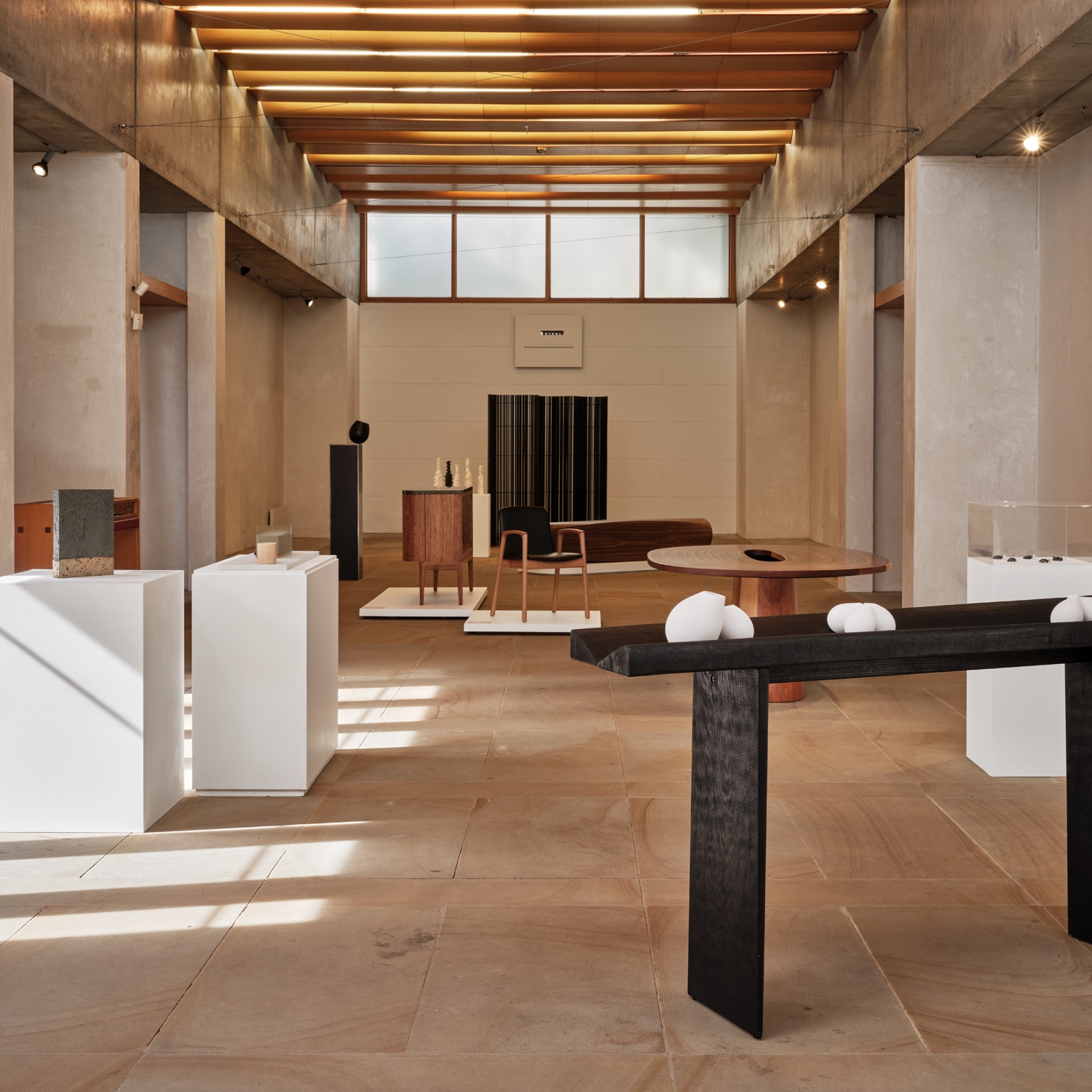
Export
1st April - 28th May 2023
An evolving exhibition of contemporary Tasmanian design drawn from our showcase at the inaugural Melbourne Design Fair 2022, alongside new work we’ll be touring to the Fair in May 2023.
EXPORT celebrates the diversity and wealth of design talent across our island, and highlights what it takes to sustainably make, tour and market globally significant, Tasmanian design.
Melbourne Design Fair 22
Melbourne Design Fair 23
Image credit: Export | Installation View, photo by Peter Whyte Photography
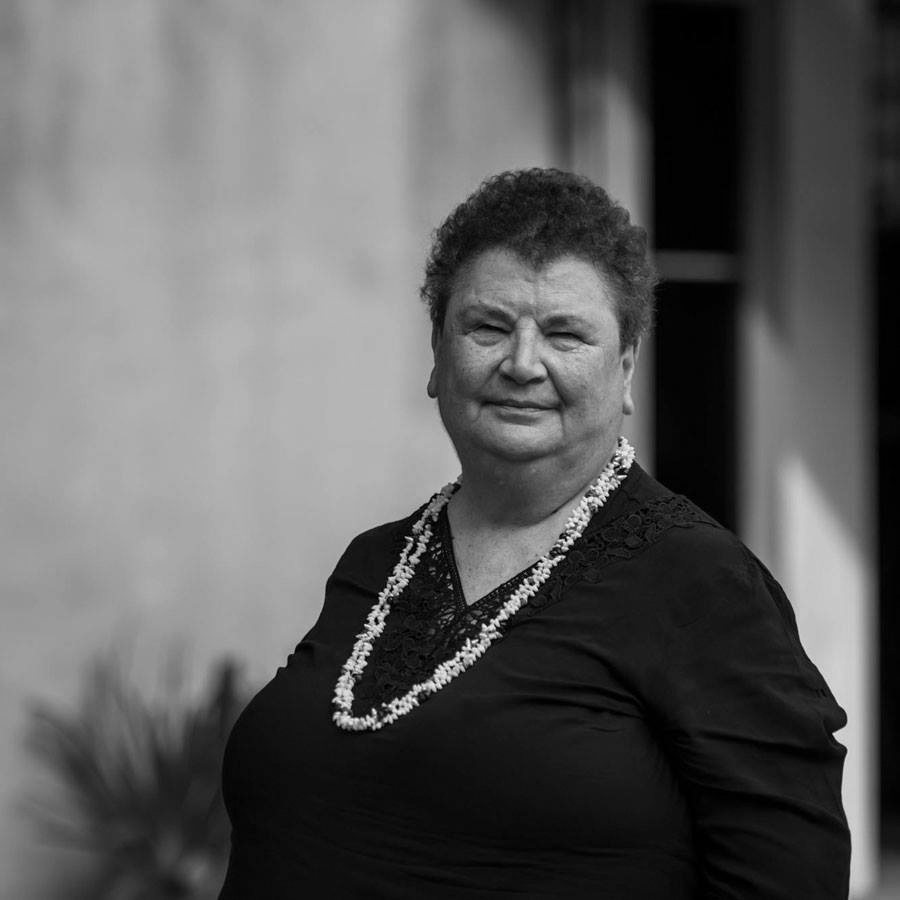
Image Credit: Lola Greeno, photo by Emily Dimozantos
Lola Greeno
Lola Greeno’s practice includes installation, natural fibre basketry and sculptural pieces using Tasmanian bull kelp. However, she is best known for her shell necklaces, an art form she learnt from her Palawa Elders in Tasmania. Greeno creates traditional and experimental neck pieces that are celebrated for their unique patterns, sequences and exquisite composition. The shells are painstakingly collected and treated in an intricate process in order to retain their lustre before threading. This knowledge was passed to Greeno from her Elders, who have traditionally collected more than 21 shell varieties to make the necklaces. Greeno’s works represent her unbroken commitment to the art form, also drawing attention to environmental change that threatens the fragile natural ecosystem.

Lola Greeno, purralayde, 2023, photo by Peter Whyte Photography

Lola Greeno, lutruwitja, 2023, photo by Peter Whyte Photography

Lola Greeno, luna, 2023, photo by Peter Whyte Photography
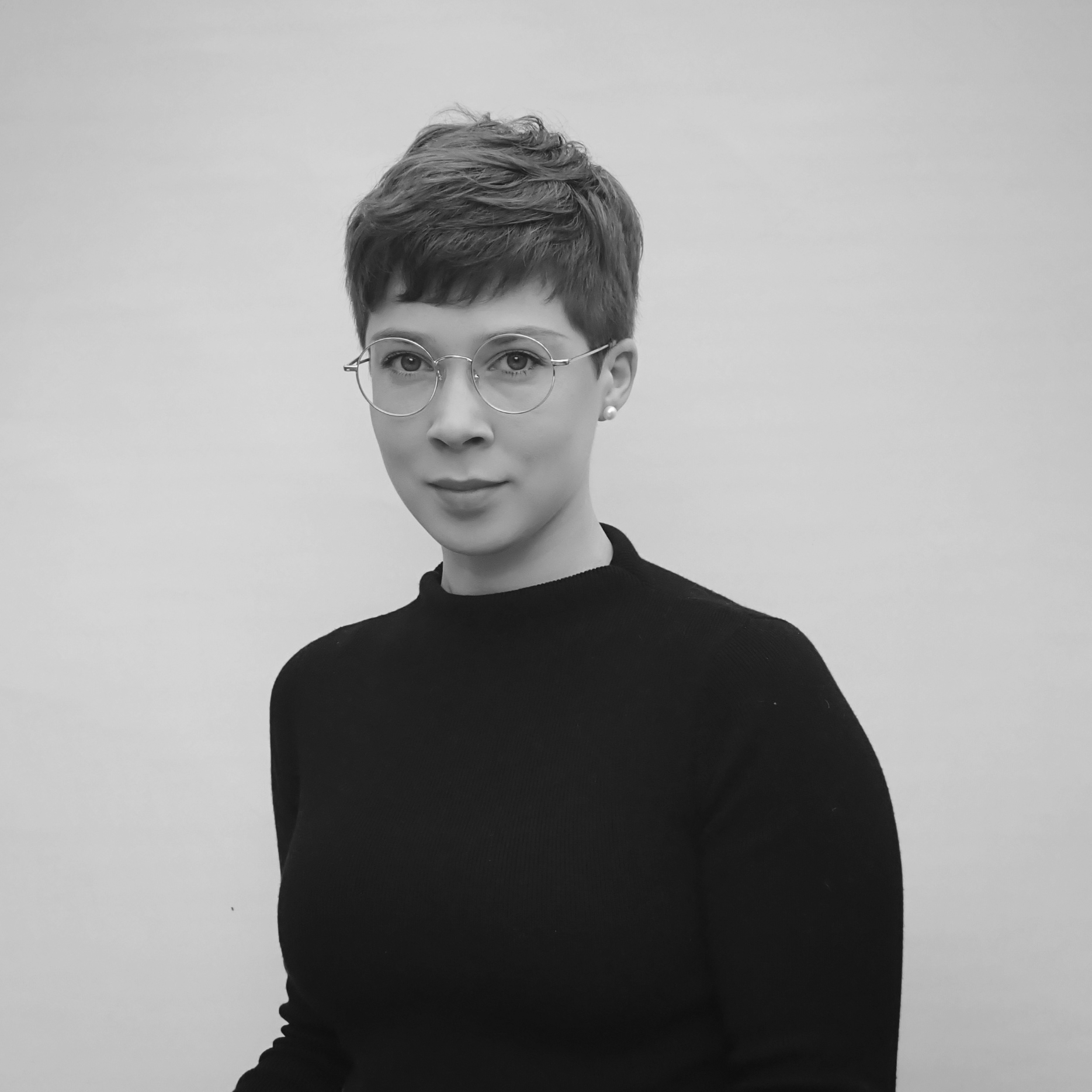
Image Credit: Samantha Dennis, photo courtesy of the designer
Samantha Dennis
Samantha Dennis is a visual artist working in lutruwita (Tasmania). Dennis is fascinated by the ways society has sought to explain and order the phenomena of life. Her work navigates themes from natural history and the material qualities associated with fine crafts, such as goldsmithing and ceramics, to reflect on the relationship between people and nature, with a particular interest in how we conceive animals that are often considered unrelatable, undesirable, unfamiliar.
Dennis has received a range of project funding, grants, commissions, and residencies through the Regional Arts Fund, Australia Council for the Arts, and Arts Tasmania. She worked on the board of Sawtooth ARI 2014-18 and was invited to join the Arts Tasmania Cultural and Creative Industries Expert Register in 2017. She is the winner of the 2016 Artentwine Biennale Small Sculpture Prize, the 2019 Design Tasmania Jewellery Award and the 2019 FIND Gallery Jewellery Bursary. Dennis was a participant of the 2021 Situate program and is currently undertaking a PhD project with UTAS.
Designer Profile

Samantha Dennis, Scarabaeus, 2023, photos by Peter Whyte Photography
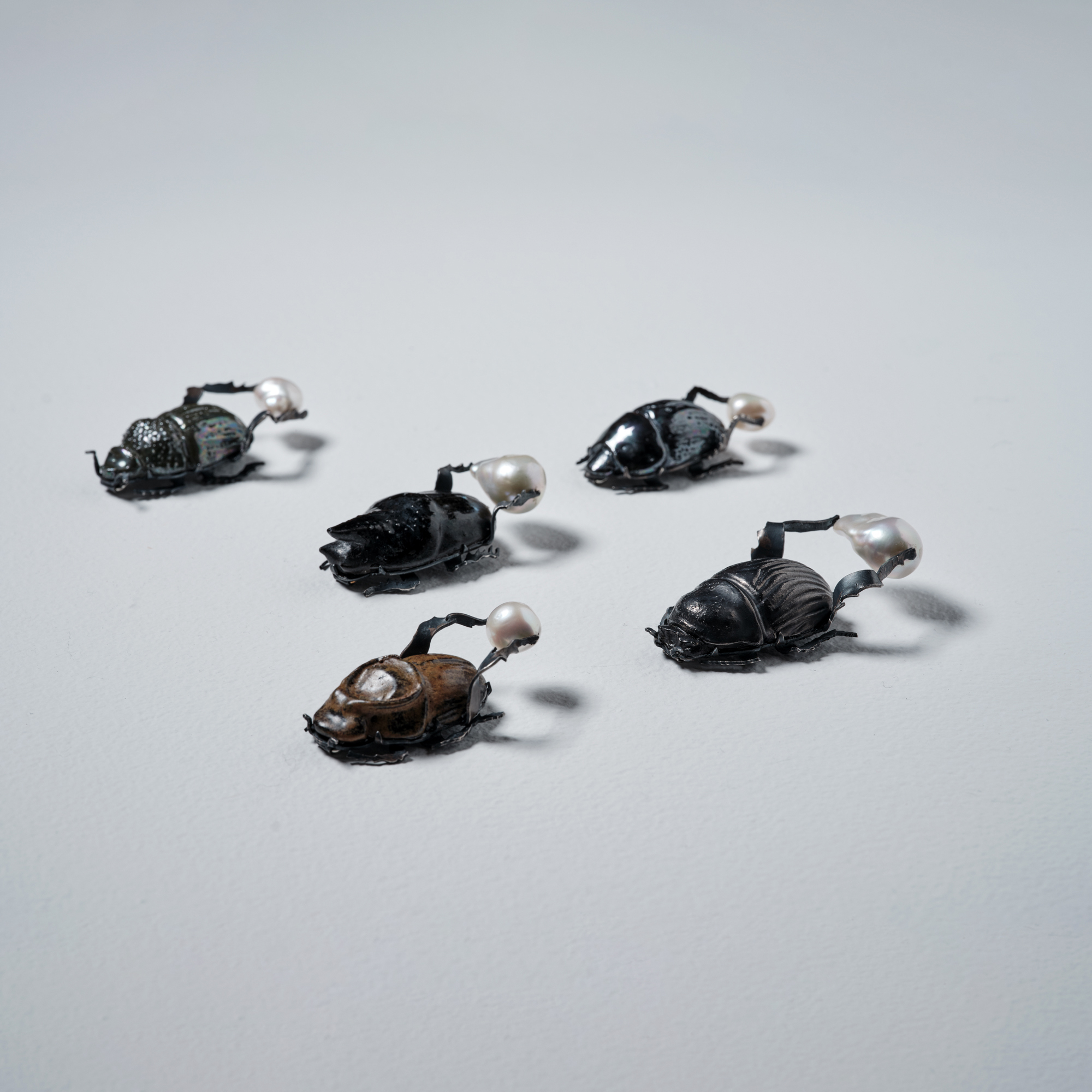
The Scarabaeus set features five new one-of-a-kind iterations of Dennis’ 2019 award winning brooch Pearl Beetle. The works feature the Dung Beetle as subject, rendered in glazed porcelain and sterling silver, with a baroque pearl taking place of the beetle’s usual harvest.
In Scarabaeus, the features of specific Dung Beetle species are represented legibly in porcelain to invite discourse regarding the use of exotic species in the Tasmanian agricultural industry. The five species depicted are the types most commonly seen in Tasmania, and which have been reported to have made positive impact in the agricultural industry since their introduction in the 1980s.

Image Credit: Matthew Prince, photo by Jesse Hunniford
Matthew Prince
Matthew Prince is a furniture designer based in Launceston, Tasmania. His practice ranges from designing and making bespoke pieces for private clients, to developing furniture products for large-scale production.
With an Associate Degree from the Australian School of Fine Furniture and a Bachelor Degree in Furniture Design from the School of Architecture and Design, UTAS, Prince’s training provides a strong foundation as both a designer and maker. His ability to draw connections between conceptual development and practical execution is at the core of his practice, and provides a basis for design language and innovation. Prince aims to design furniture solutions that are simple, elegant and honest, maintaining a quiet presence and complimenting their surroundings.
Designer Profile

Matthew Prince, Mill, 2023, photos by Peter Whyte Photography

Mill is a dining or occasional chair intended for residential applications. The distinguishing design language is in the transition from legs to arm rest, a detail that was realised and worked through during the prototyping phase of the design process. The design intent was to combine ergonomic performance and structural integrity with a simple, elegant presence.

Image Credit: Simon Ancher, photo by Adam Gibson
Simon Ancher
Simon Ancher is a designer-maker living and working in Launceston Tasmania. After studying Furniture design in 2000 he worked from the Designer Makers Cooperative workshop in North Hobart, where he developed his practice specialising in one off commissioned work and interior fit-outs. He then moved to Launceston to study Environmental Design. From 2006 Ancher spent 10 years as Program Director of Furniture Design for the school of Architecture & Design, UTAS, Launceston. Through his practice, Simon Ancher Studio, he continues to develop his own furniture range as well as undertake commissioned work including public art and seating. Ancher’s work is informed by the use of appropriate materials over style and is inspired by observation.
Designer Profile

Simon Ancher, Dilston Cabinet, 2023, photos by Peter Whyte Photography

The Dilston has been designed as a smaller version of the popular drinks cabinet that was originally designed for Stillwater Seven luxury accommodation. Large radiused cornered doors enable hinges to be positioned significantly deeper along the side which when opened allow generous access to the offerings held within. Timber sculptural objects are a playful inclusion that encourage a curatorial approach to displaying objects inside.
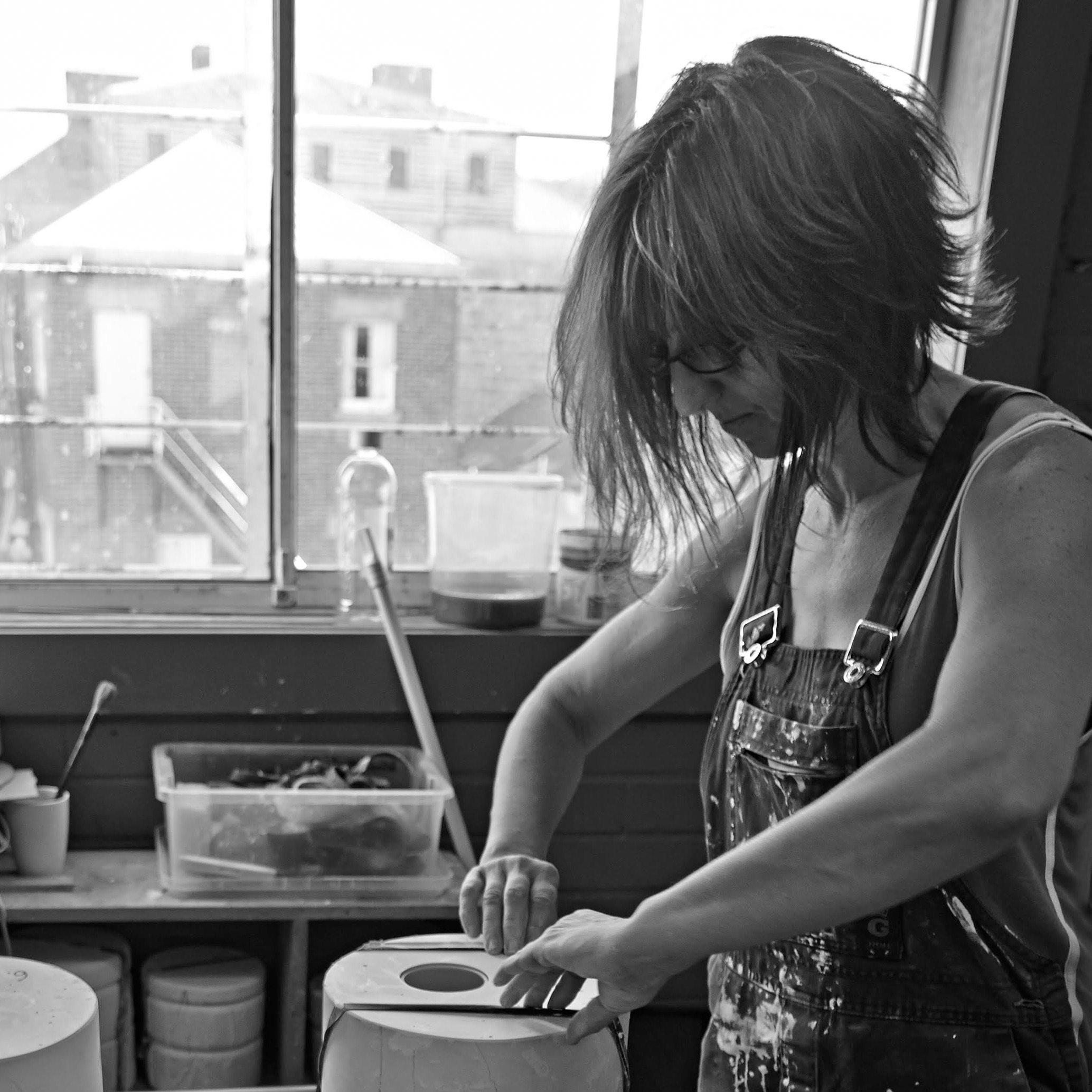
Image Credit: Belinda Winkler, photo by Peter Whyte Photography
Belinda Winkler
Winkler was born and raised in Tasmania and has had a lifetime of involvement with the Tasmanian landscape.
As an artist and designer, Winkler’s practice spans ceramics, sculpture and design. At the heart of her practice is the poetic notion of a sense of life within form. This notion rests on two assumptions; firstly, that curves projecting tension and energy are difficult to view with detachment. Such curves invite associations beyond the visual and the intellectual. They are evocative, and thus have the potential to generate connections, sensually, emotionally, and imaginatively — they tempt touch, be that with the eyes, the hands, the memory, or the imagination. The second assumption is that that the tactile dimension of these works is deeply implicated in these connections.
Winkler completed a PhD focussing on Reflective, Practice-based Research through RMIT University’s School of Architecture and Design in 2014, having previously received a Bachelor of Fine Arts with First Class Honours at the University of Tasmania and the Australian Postgraduate Award in 2006 and a Bachelor of Education in 1986. Winkler has created works for numerous public art commissions and her sculptures and designed objects have been widely exhibited in solo and group exhibitions locally and nationally and are included in numerous public and private collections.
Designer Profile

Image Credit: Kevin Perkins, photo courtesy of the designer
Kevin Perkins
Kevin Perkins grew up on the fringes of Devonport, Tasmania & learnt about timber from his father. He completed a Joinery Apprenticeship in 1965, Industrial
Arts Teaching Diploma in 1969, then Sculpture at the School of Art, Hobart.
Major commissions include Launceston General Hospital Chapel 1979, the Prime Minister’s suite in New Parliament House, Canberra 1985-1988, Parramatta Cathedral 2001-2008. Perkins is a retired lecturer (part-time), Centre for Furniture Design, School of Art, Hobart.
He has pieces in the Powerhouse Museum, Sydney, the Australian National Gallery, Canberra, the Queen Victoria Museum & Art Gallery, Launceston, the Tasmanian Museum & Art Gallery, Hobart, & Design Tasmania, Launceston, & in private collections in USA & Australia.
Perkins is interested in landscape, flora & fauna, particularly birds, & Tasmanian Artists, old and emerging.
Designer Profile

Belinda Winkler and Kevin Perkins, Melaleuca #1, 2023, photos by Peter Whyte Photography

Melaleuca, from Greek melas black + leuka, feminine of leukos white. Melaleuca #1 alludes to the black of the tin and the white of the quartz at Melaleuca, in the far southwest of Tasmania, drawing parallels between the rolling hills and valleys of the landscape, the ripples in the water, along with the contour feathers and the smooth rounded eggs of the Black Swan.
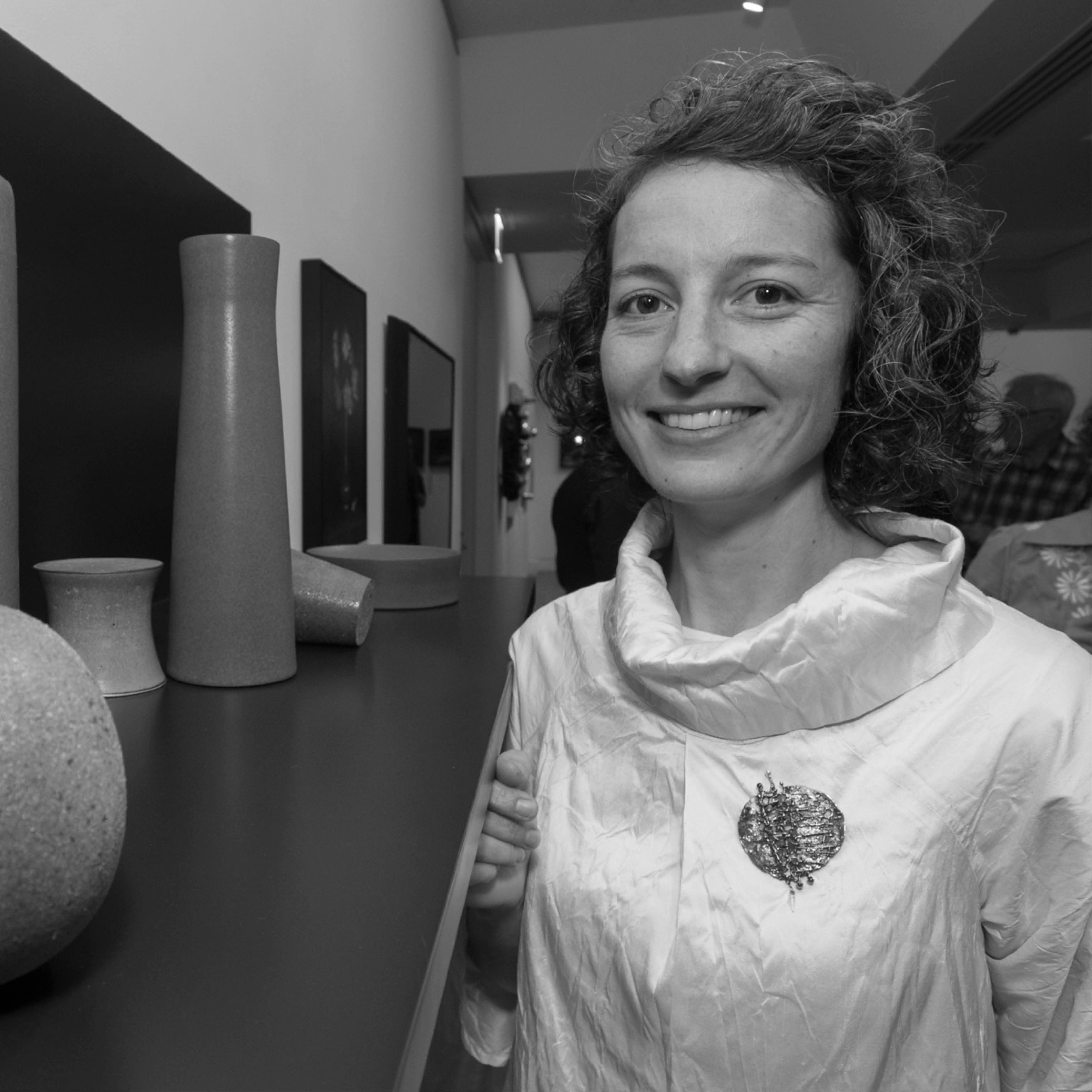
Image Credit: Kelly Austin, photo by Jamie Williams/Coffs Harbour Regional Gallery
Kelly Austin
Kelly Austin is an artist living in lutruwita/Tasmania, Australia and works primarily with ceramic materials. She completed a Bachelor of General Fine Arts from the Emily Carr University in Vancouver, Canada in 2011, a Master of Philosophy from the Australia National University, Canberra in 2016 and a Bachelor of Architecture and Built Environment from the University of Tasmania in 2021.
Austin’s work has been exhibited in curated exhibitions across Australia, Canada and The United States of America. In 2018, her work was included in The Churchie National Emerging Art Prize at the QUT Art Museum in Brisbane, Australia. Kelly received the The National Still Life Prize from Coffs Harbour Regional Gallery in Coffs Harbour, Australia in 2019. In 2021, her work was included in the Women’s Art Prize, Tasmania and in 2022, the Woollahra Small Sculpture Prize in Sydney, Australia.
Kelly has undertaken numerous international artist residencies including QBank Gallery in Queenstown, Tasmania and Medalta International Ceramic Residency in Medicine Hat, Canada. Her work is held in both private and public collections including: The Tasmanian Museum and Art Gallery, the Coffs Harbour Regional Gallery and the Art Gallery of Ballarat.
Designer Profile

Kelly Austin, Still Composition 120, 2023, photo by Peter Whyte Photography
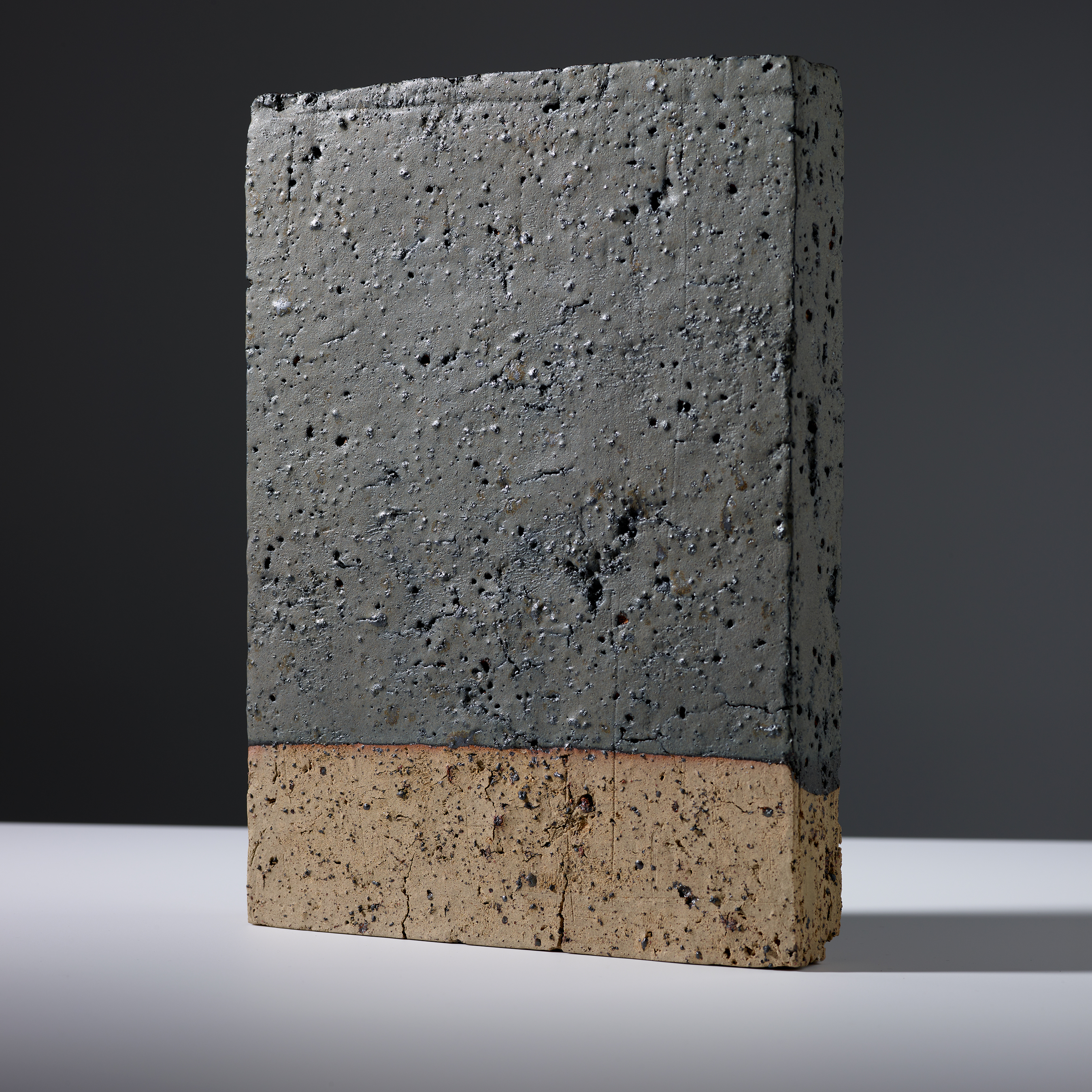
Kelly Austin, Spatial Object 2, 2023, photo by Peter Whyte Photography
This work is contradictory. It celebrates the tradition and history of making and the relentless dedication to one’s craft, while at the same time pushing against the rigour of efficiency and utility, process and practice. From within the disciplines of studio ceramics and studio craft, objects are deconstructed, re-interpreted and re-framed against the background of painting and sculpture.
This work is quiet, focused, attentive and nuanced. It creates a space for softness, whilst also exploring the materials of this earth and their transformation: the wetness and heaviness of clay and the solidity of rock faces. It is about being in, and of, landscape: pink sand, turquoise earth, a wall of green against the setting sun’s peach-stained clouds.
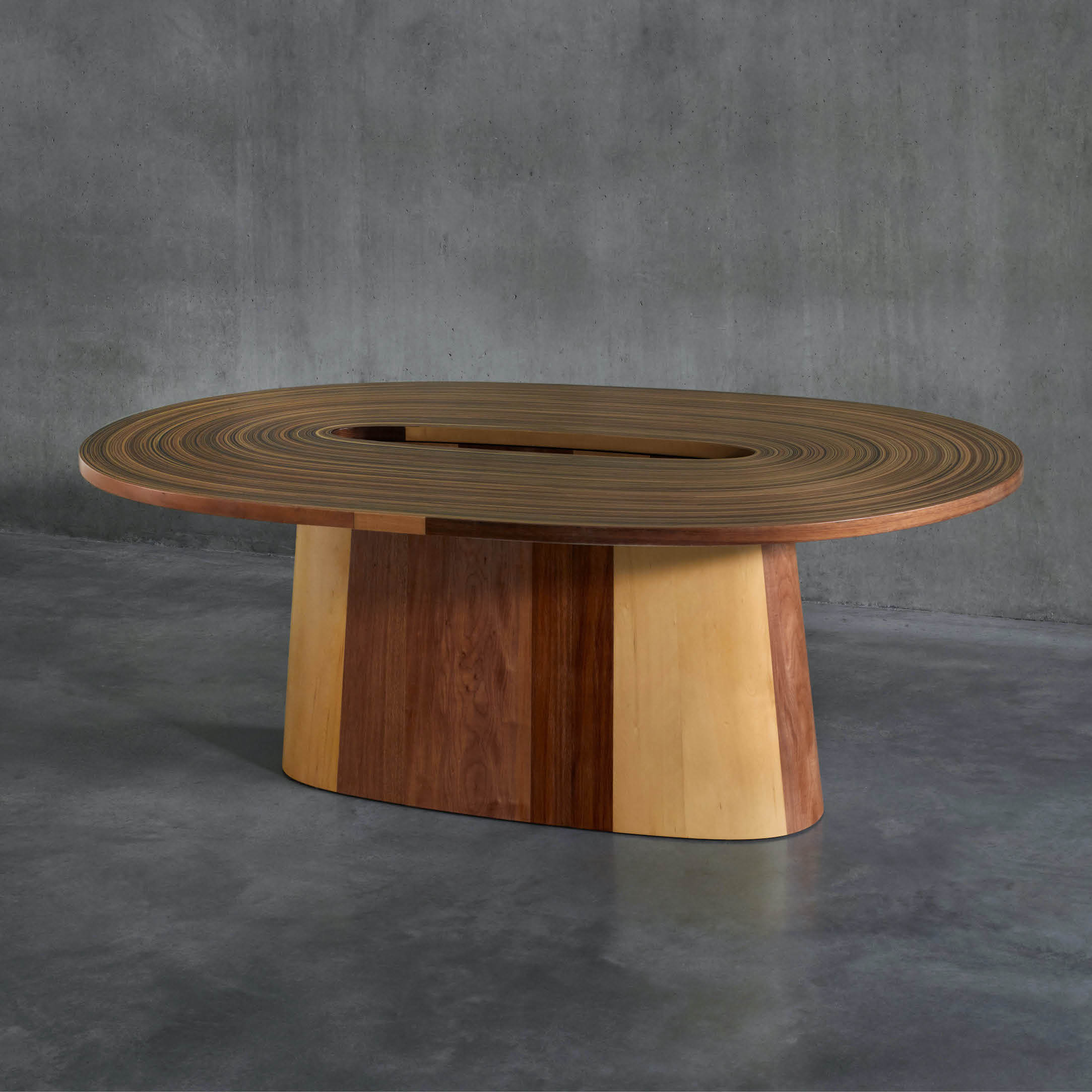
Brodie Neill, ReCoil; Photography by Angela Moore
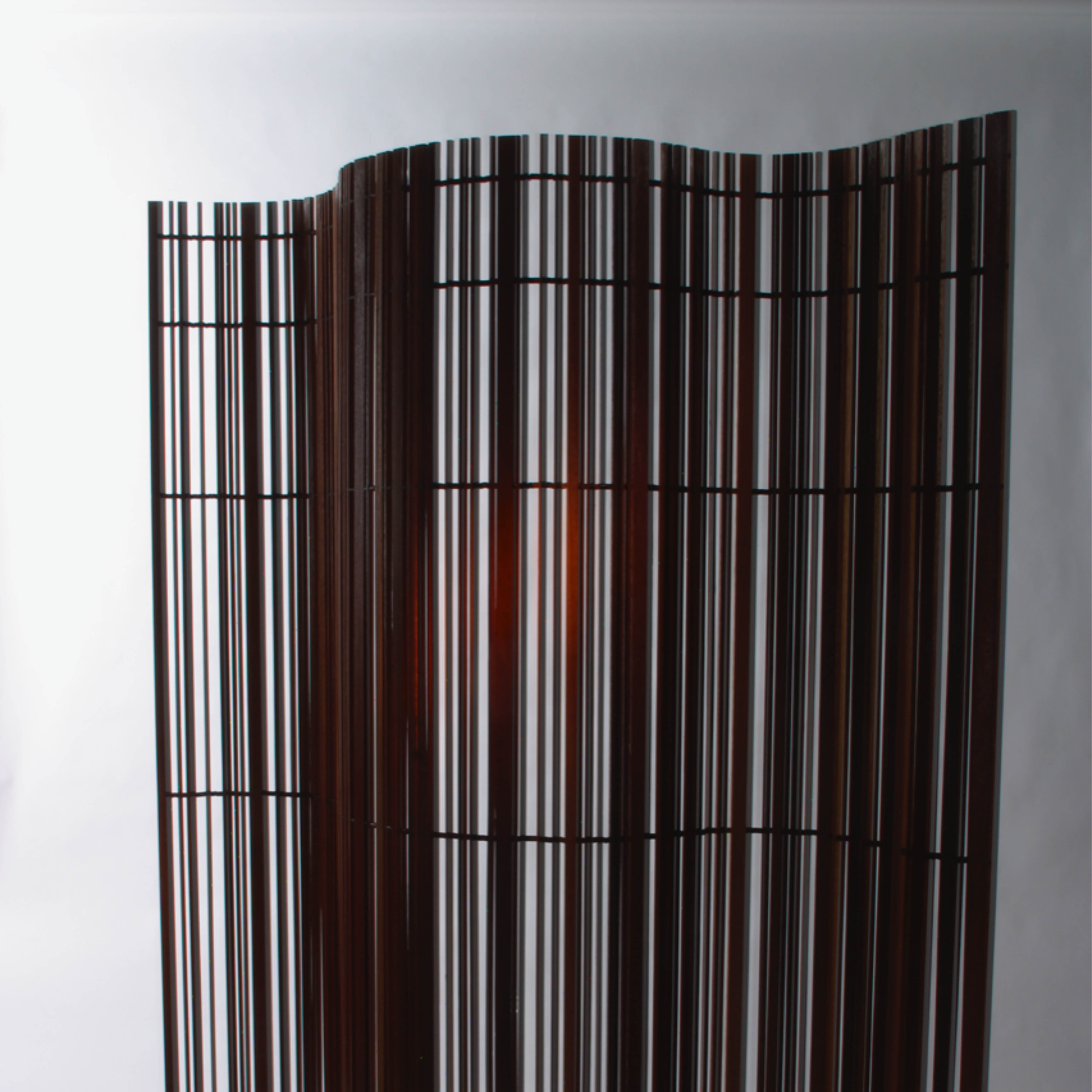
Laura McCusker, Barcode Screen; Photography by Peter Whyte Photography
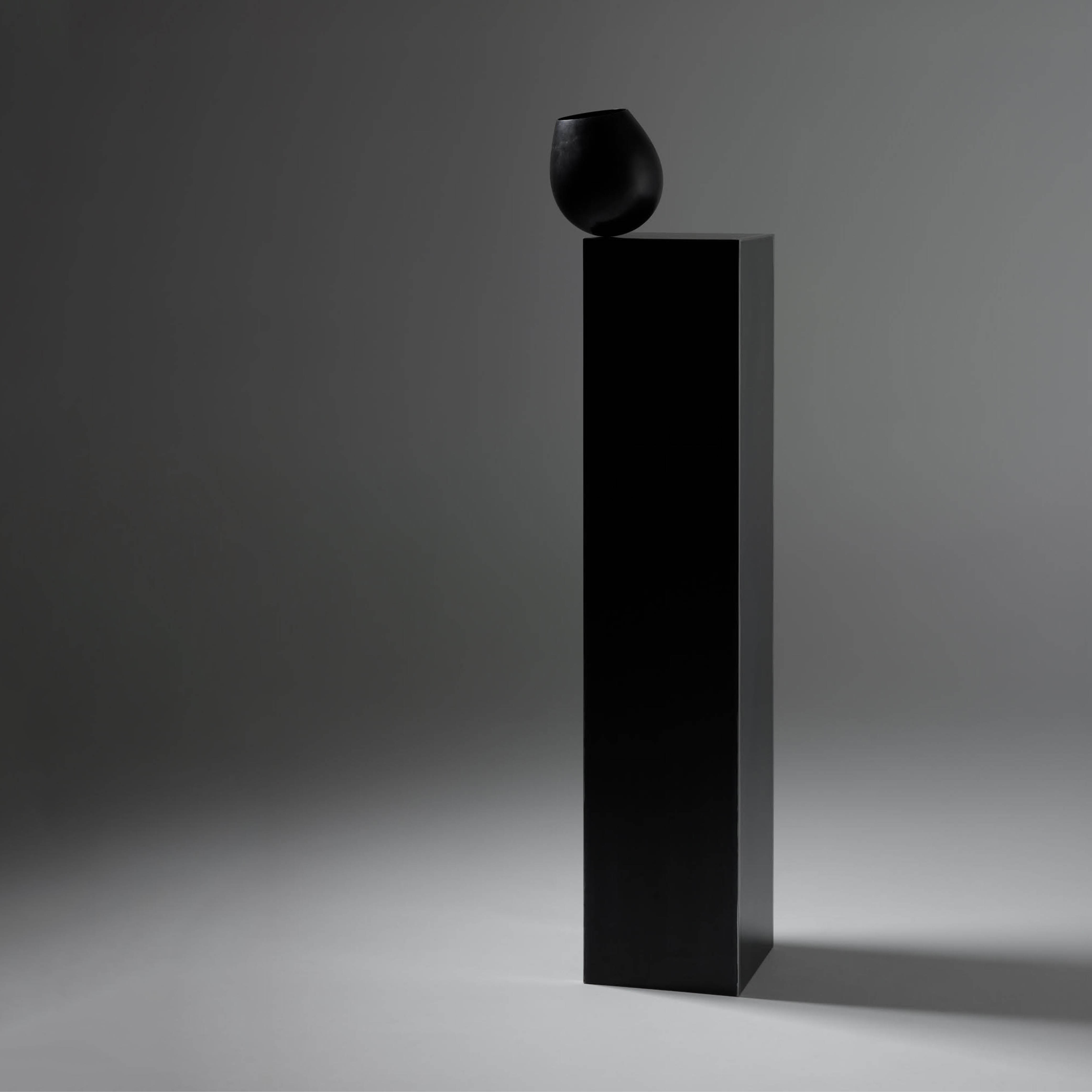
Belinda Winkler, Brink #4; Photography by Peter Whyte Photography
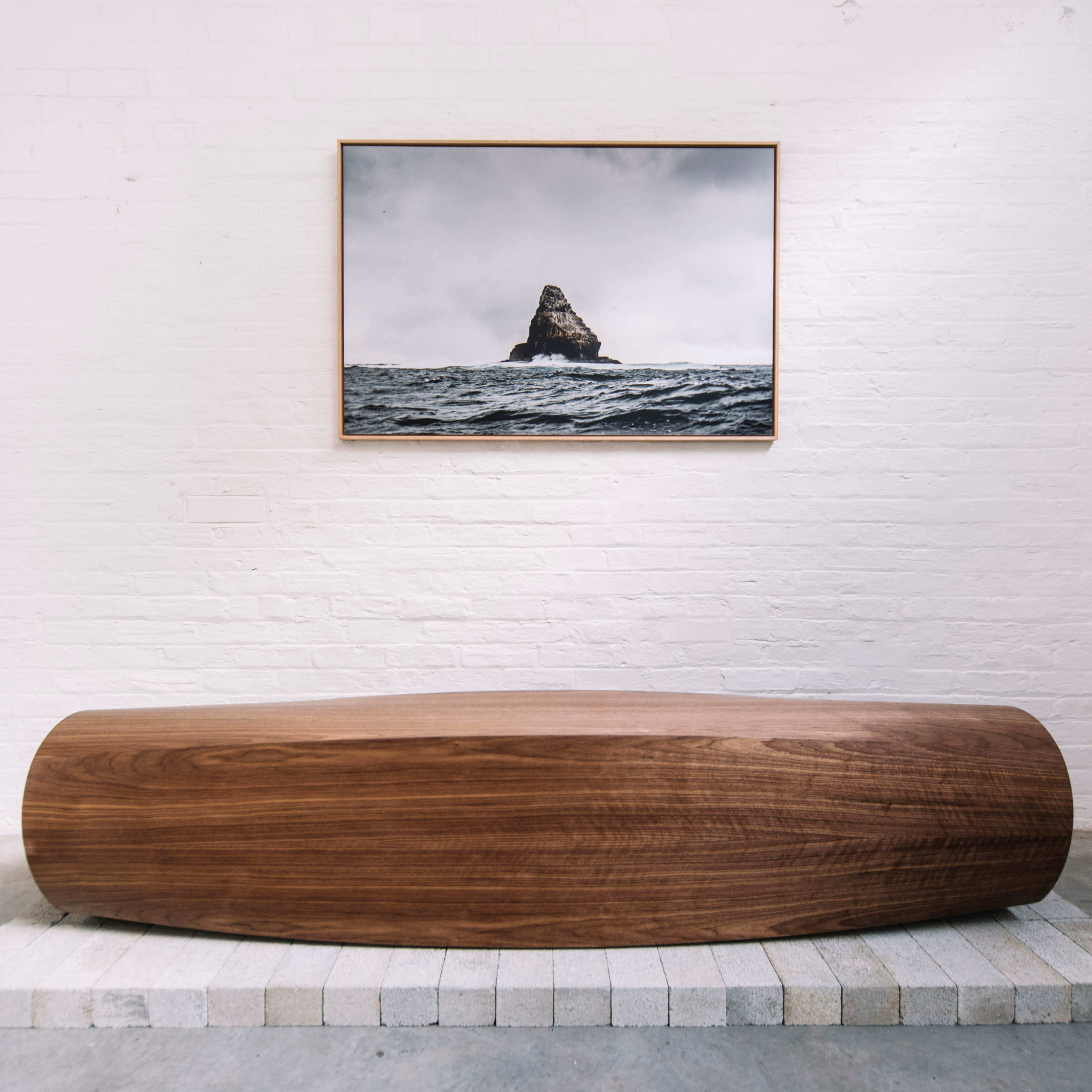
Scott Van Tuil, LOFT Bench: Photography by Jonathan Wherrett.
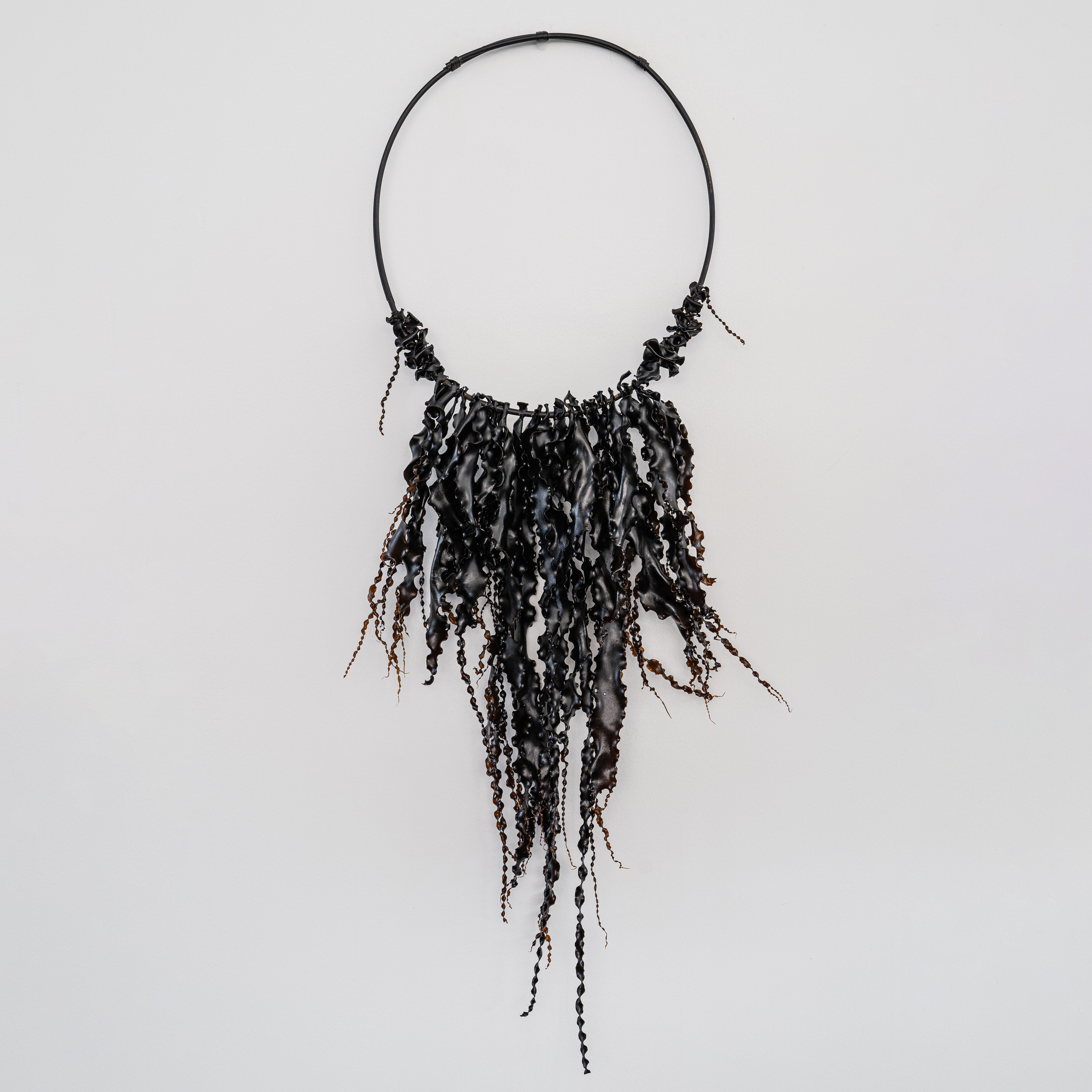
Lillian Wheatley, rikawa (kelp); photo by Joe Chelko.

Jane Bamford, Tall Derwent River Ascidian Bottle; photography by Peter Whyte Photography.
Melbourne Design Fair: PRESENT
16th March - 20th March 2022
Curated by Michelle Boyde
PRESENT: Melbourne Design Fair 2022
Featuring works by Laura McCusker, Brodie Neill, Scott Van Tuil, Lillian Wheatley, Belinda Winkler and Jane Bamford.
The Melbourne Design Fair showcase has been developed by Tasmanian-based freelance designer and curator Michelle Boyde and presents a range of naturally resourceful Tasmanian designer-makers whose practice embodies a living relationship with their craft and our island’s beautiful materials.
Melbourne Design Fair 2022

Image Credit: Lillian Wheatley, *rikawa*, 2022, photo by Joe Chelko
Lillian Wheatley
Lillian is a saltwater woman (muka luna) from the Trawlwoolway nation, North East Tasmania. She is a senior cultural practitioner, knowledge keeper, artist/designer and respected Elder in her community.
Lillian’s work is inspired by her country and life growing up on an island in the Bass Strait. This was the very island her ancestors were subjected to enforced displacement from their homelands. They were forbidden to practice their cultural ways as attempted genocide of her ancestors continued. Today, Lillian’s people are continuing the cultural practices that were taken from her old people.
Lillian’s life growing up on an island has instilled a deep respect for country, for her peoples livelihoods depending on the tide, seasons, moon, wind, just as the original custodians of this land did. As a young child Lillian would gather cuttlefish, kelp, shells, driftwood, treasures washed up from the sea and topaz washed down from the mountains. This childhood pastime grew into a way of life for her.
The influences of her cultural upbringing inspire her to create her pieces. Today when she gathers traditional materials to create her work, she is honouring her people, culture and customs by continuing the thriving, living ancient practices. Her connection and love of her island home and ancestral lands resonate in the exquisite pieces she creates both contemporary and traditional.
Designer Profile
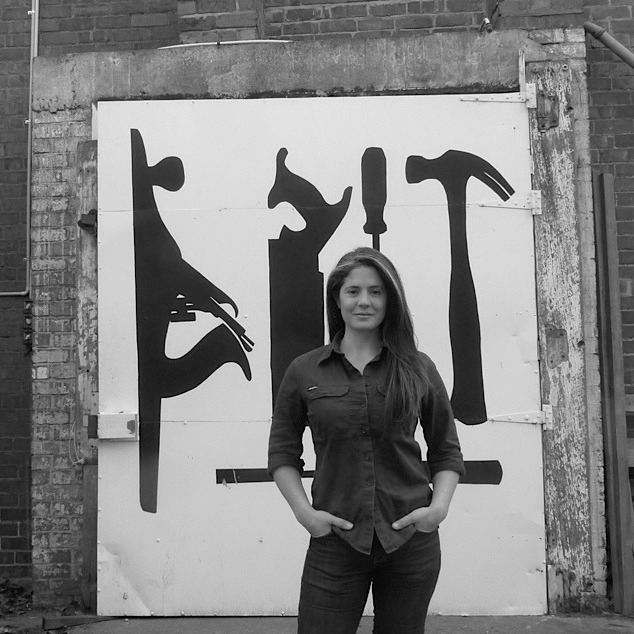
Image Credit: Laura McCusker, photo courtesy of the designer
Laura McCusker
Laura McCusker (b. 1975 Sydney)has been designing and making furniture for over 25 years, creating functional pieces from honest materials.
After founding her business in Sydney, she settled in Tasmania, working from a 110-year-old former apple-packing shed beside the New Town Rivulet. Inspired by her adopted island’s natural beauty and quiet simplicity, she makes work that is sympathetic to its surroundings, letting the timber speak for itself.
With a deep respect for materials, she favours the five species known collectively as Tasmanian Oak, crafting them into bespoke furniture, custom joinery, and functional art. Her work features at Mona, the Tasmanian Museum and Art Gallery, Spring Bay Mill, and in private domestic settings nationally.

Image Credit: Scott Van Tuil, photo by Jonathan Wherrett
Scott van Tuil
VAN TUIL Design Studio was established by Scott van Tuil upon graduating from the University of Tasmania, with a Bachelor of Environmental Design. Working across a diversity of modes, materials and scales, the desire is always to create objects that are beautiful in form and function, and meaningfully contribute to the spaces they inhabit. Located in Hobart, Tasmania, this small island at the edge of the world continues to inspire and influence.
Designer Profile
Website
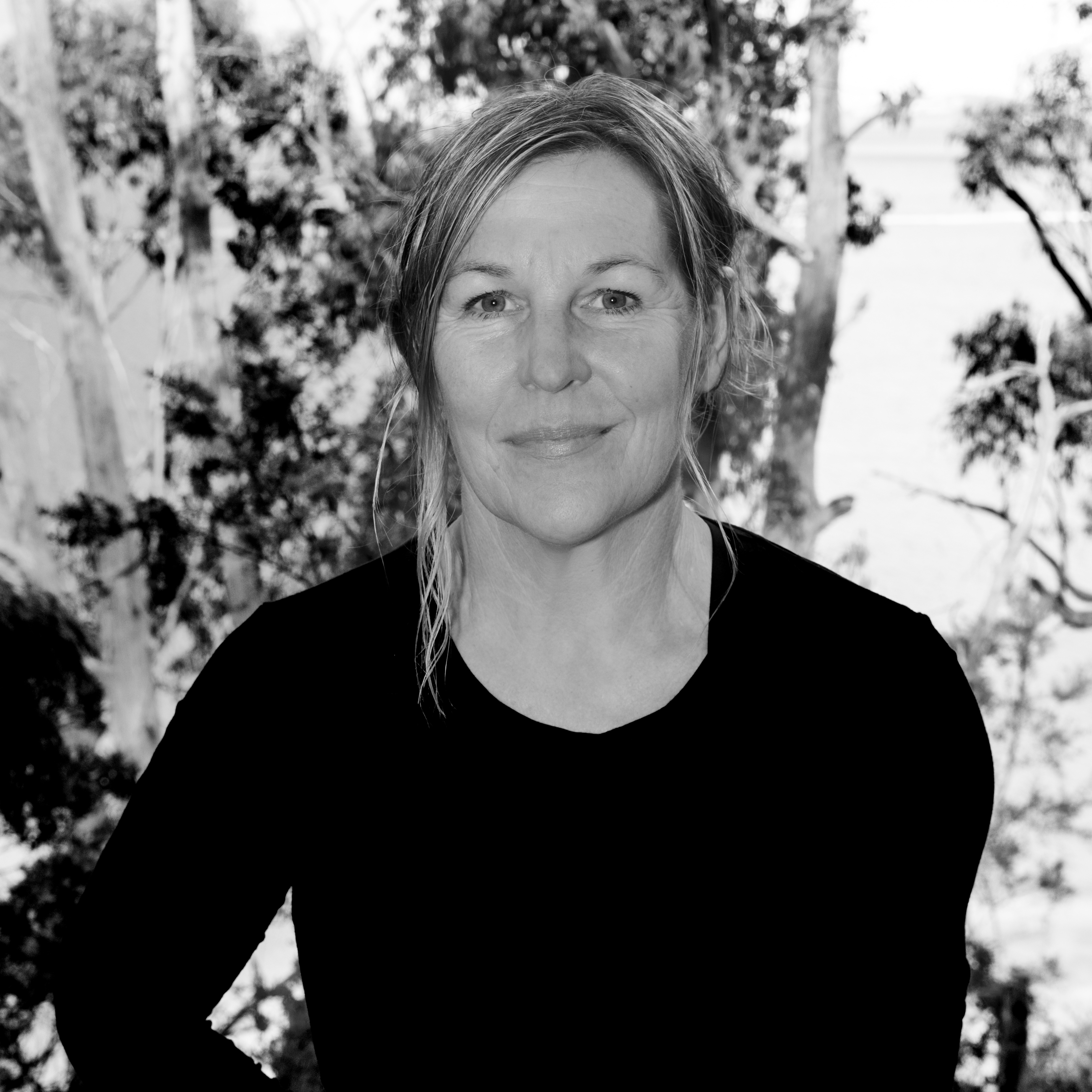
Image Credit: Jane Bamford, photo courtesy of the designer
Jane Bamford
Bamford began studying ceramics in Japan at To En Kai studio in 1993. She subsequently completed a BFA, majoring in Ceramics at the Tasmanian College of the Arts, Hobart and was awarded the Deans’ roll of excellence in 1995. Bamford was selected as an Associate at the Jam Factory Craft and Design Centre in Adelaide in 1997 and has since exhibited throughout Australia and internationally.
Bamford creates work over a range of ceramic processes including slab formed, hand built, slip cast and weaving. Her work is primarily informed from research and observation of the coastal, marine, and alpine landscapes of Tasmania. Her observation, connection to place and environmental awareness has led her to produce work on issues like climate change’s impact on Tasmanian marine environments and the creation of Spotted Handfish spawning habitat in collaboration with CSIRO.
Bamford has actively pursued art/science collaborative projects, including collaborating with little penguin ecologists in both Tasmania and South Australia and has developed links to philanthropy in species support. She is currently an artist in residence at the University of Tasmania Centre for the Arts and Media creating ceramic work to be deployed in marine installations as part of a collaborative project to regenerate a series of native oyster reefs in South Australia.
Jane has become known for pioneering an arts practice around creating functional forms in species support which embody creative problem solving, functionality and compassion for the non-human world.
Designer Profile
Website

Image Credit: Brodie Neill, photo by Mark Cocksedge
Brodie Neill
Born and raised in Hobart, Tasmania, Brodie Neill studied Furniture Design at the Tasmanian School of Art before completing his Master’s at the Rhode Island School of Design (US). In 2005 Neill setup his London studio where his work covers limited editions as well as production pieces for his self- produced brand Made in Ratio. In 2016, Neill represented Australia at the inaugural London Design Biennale with a critically acclaimed installation Plastic Effects, where he launched the now iconic Gyro table.
Neill is known for his mastery of materials, form, and process. He crafts inventive, resourceful, beautiful contemporary design works. Brodie Neill recontextualises and transforms not only virgin materials, but the forgotten, the waste, the discarded, into mesmerizingly beautiful, refined designs. All of this with a strong message that is elegantly contained in each piece. They embody care, environment, origin, and lifecycle. Eminently collectable, Brodie Neill designs can be found in galleries and museums, as well as the home, particularly with Made in Ratio.
ReCoil, his elliptical centrepiece table was first presented by Design Tasmania for London Craft Week 2021, in partnership with Hydrowood, Lark Distillery, the Tasmanian Government and UK/Australia Season.